Day 22 – Wednesday, August 27, 2025
I thought of staying one more night, but curiosity got the better of me. After a nice last swim, I was on my bike by 9 am.
I had breakfast at a local bakery – this time, neither the coffee nor the food was all too good, but no major harm done. I got to a town called Pirgos – not really amazed by it, though it had an impressive church. I filled up my food and water supplies at a local supermarket.
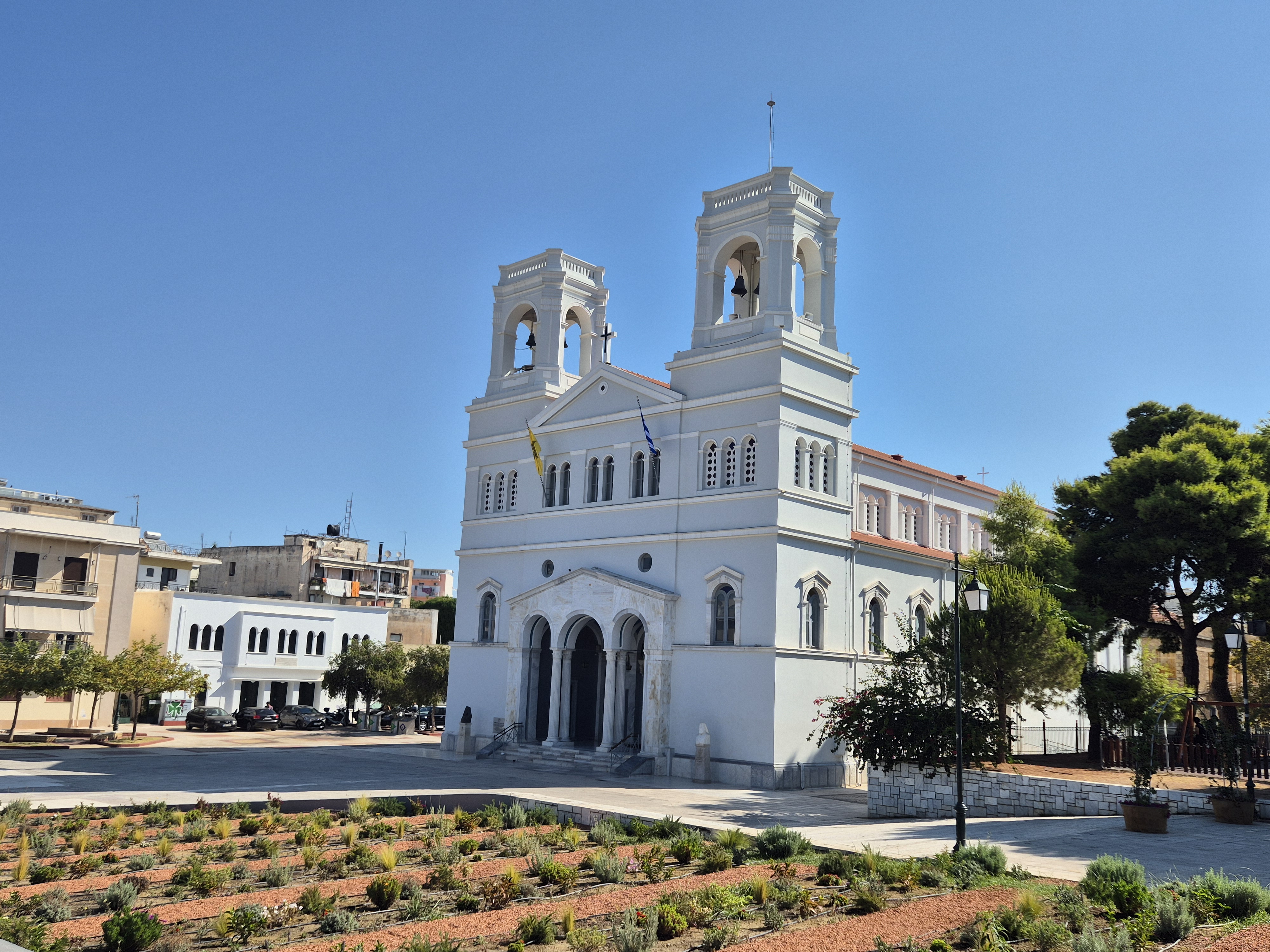 Church of Pirgos
Church of Pirgos
It was now a twenty-something kilometer ride to Ancient Olympia, a UNESCO site, along a major but scenic road with a bit of a roller-coaster profile. I got there around noon, paid the €20, and entered.
You see, I was not too impressed by the breakfast or Pirgos – somehow Olympia failed to thrill me. Maybe my expectations were too high. I recall that on Sicily, I rode to a Greek temple and was awed by it. Here, while the stadium itself was cool, there was rubble and ruins all around – somehow the Olympic spirit did not hit me. I must admit I am not a big fan of modern-day Olympics, so that might explain my lack of enthusiasm. I tried – but failed.
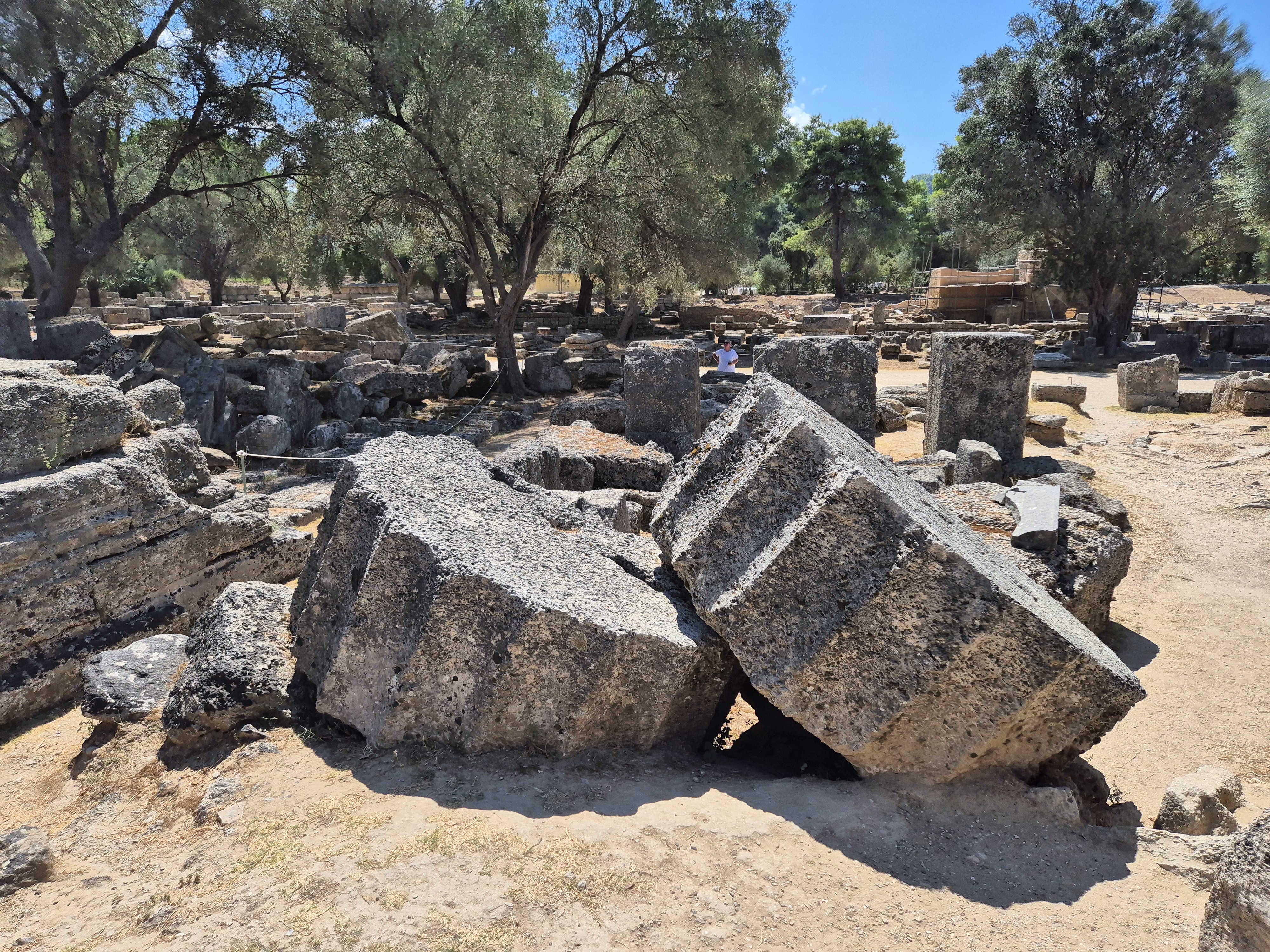 Ruins at Olympia
Ruins at Olympia
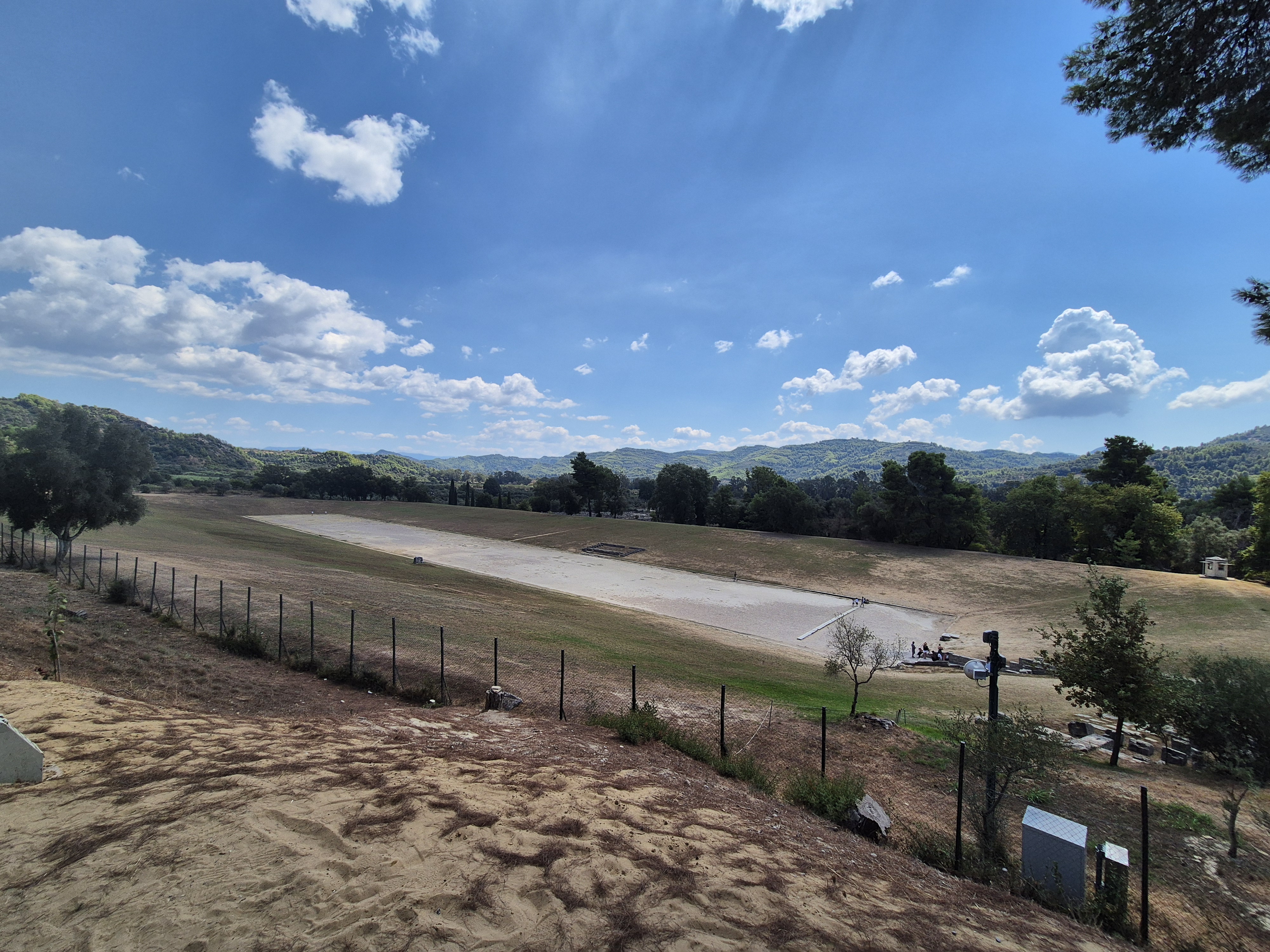 The stadium
The stadium
A bit more impressive was the museum of the Olympic Games, where discs used back then in disc throwing were on display. Somewhat disappointed, I left just an hour and a half later.
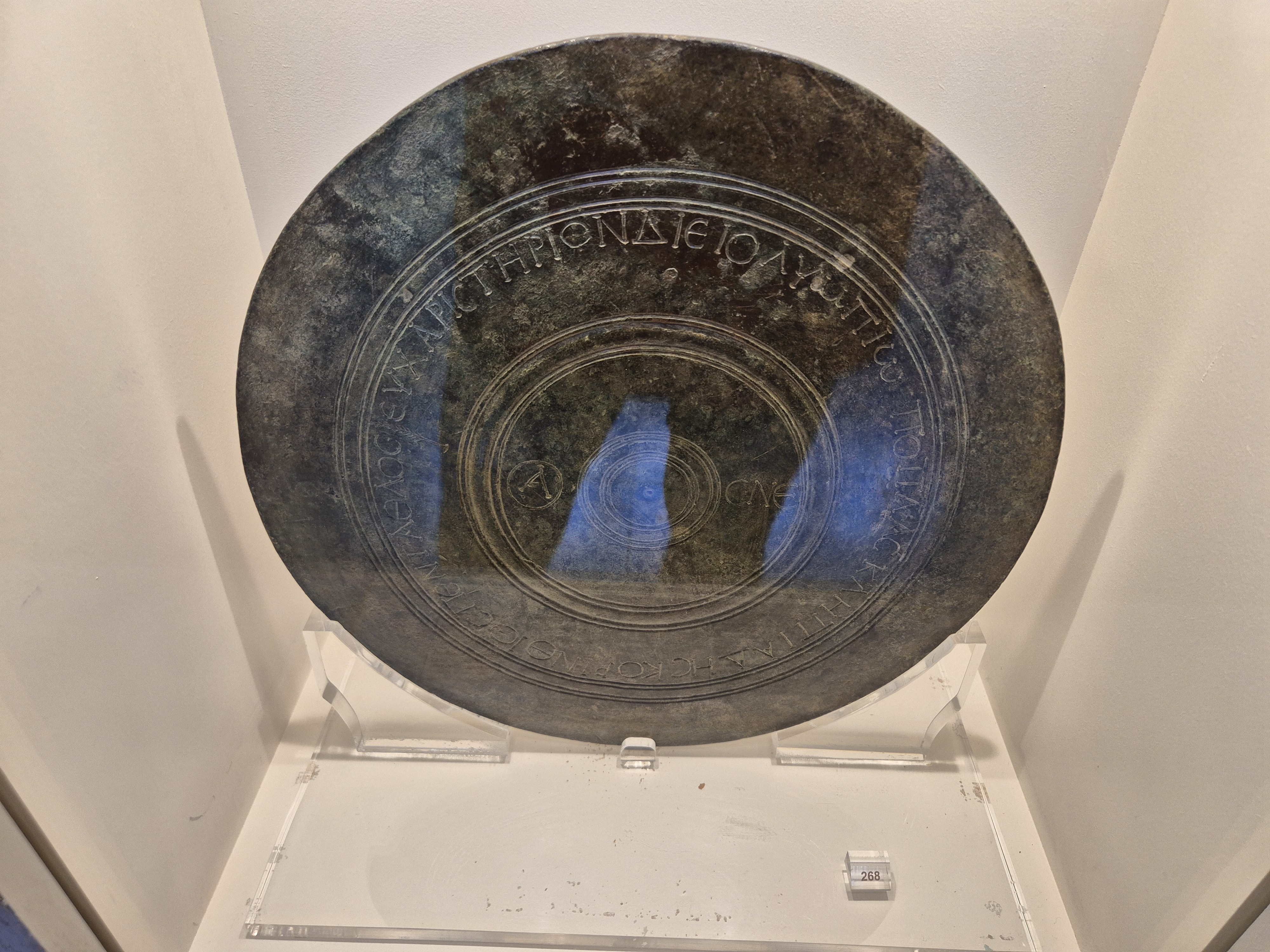 Discs used in disc throwing
Discs used in disc throwing
My next plan was to visit the Temple of Apollo Epicurius at Bassae, some 55 kilometers away. The “official” road took a wide curve around Olympia, but behind the ancient stadium, there was a cordoned-off road (for cars) that I decided to ride on. It went past the local headquarters of the Greek Olympic Committee – their main HQ was probably in Athens. There was also a memorial honouring Baron Pierre de Coubertin, the founder of the modern Olympic Movement, but that area was closed, so I could not pay my respects. According to Wikipedia, his heart rests there.
Now I was on a very empty road, hilly and quite green. The ancient Greeks knew where to set Olympia – it was a valley with two rivers and lots of forests. After a while, I reached a major road, with hardly any traffic. “My” side was closed, but I was told I could ride there. It was good riding – slightly uphill, but nothing to worry about.
Ooops, the pleasant road came to an abrupt end – it continued, but without pavement. I was “somewhere,” really not sure where, and could see a rather serious climb ahead. There was a house; I asked if it was the right road. They confirmed and begged for some water – I gave them an entire bottle. Quite a climb started, with lots of switchbacks, me being slow in the August heat. I asked whether there was a tavern, and they signalled it was far away. Then I discovered a sign saying a tavern was just 2 kilometers away, uphill. The locals were correct – yes, a tavern it was, though it looked pretty much closed. I found a garden hose and used it to cool off and refill my bottles, which were quickly emptying.
It turned out to be a spectacular afternoon. While there were some descents, I was generally ascending, riding through small, quaint villages. Cacti were everywhere, many in full blossom. Despite the difficult ride, I really enjoyed my time – it was authentic Greek countryside, hardly more authentic than this.
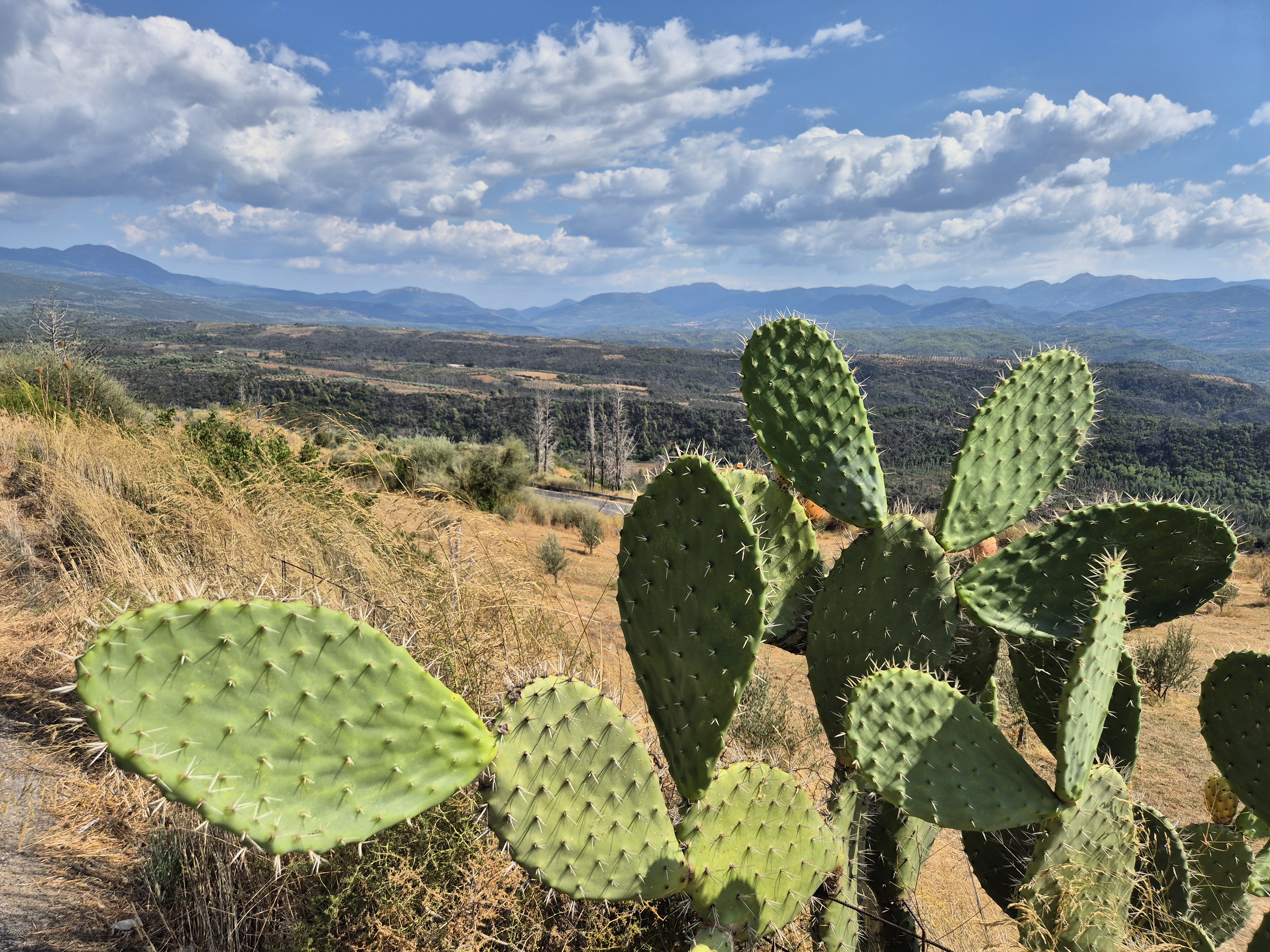 Do not touch!
Do not touch!
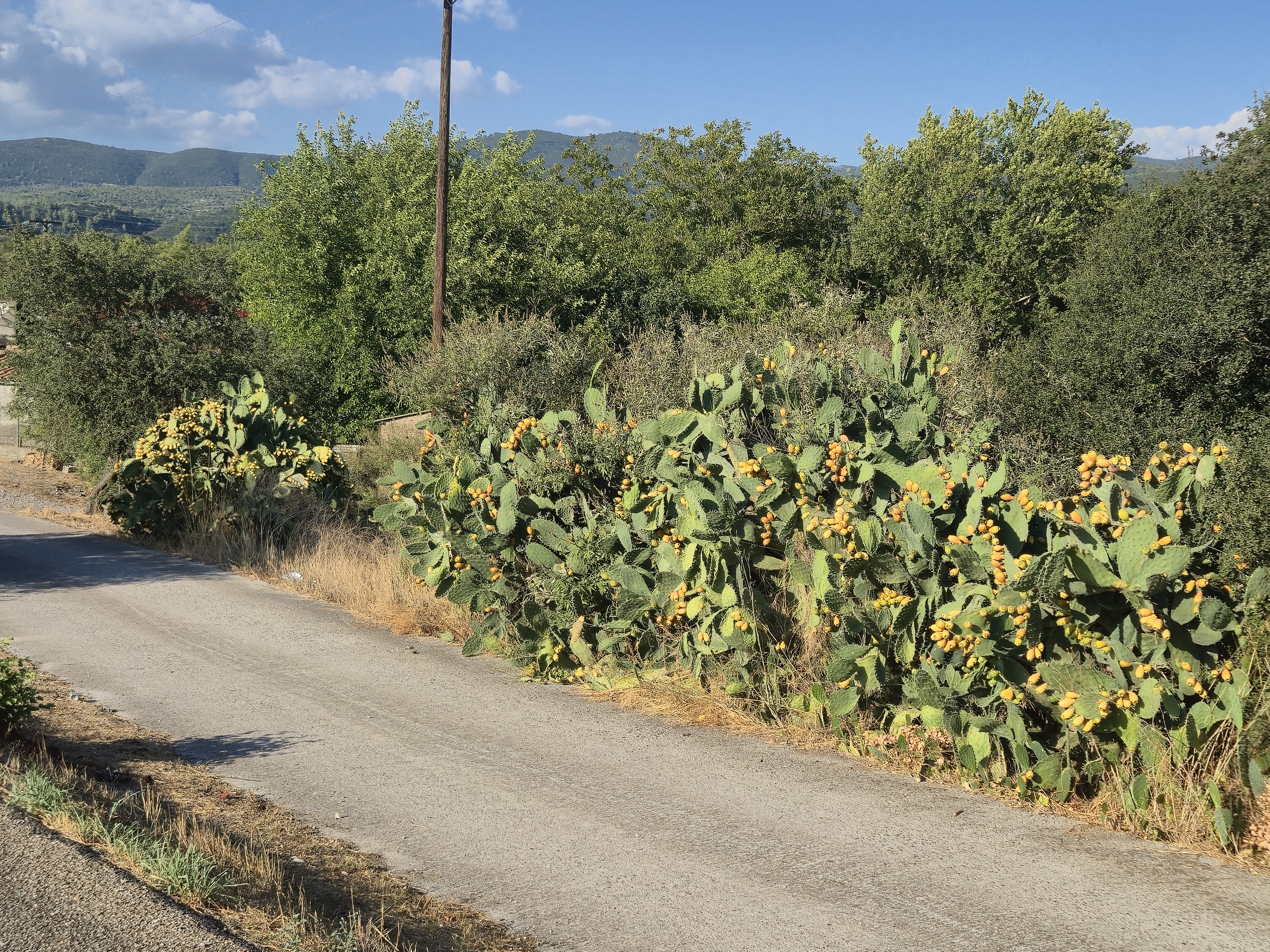 Blooming cacti
Blooming cacti
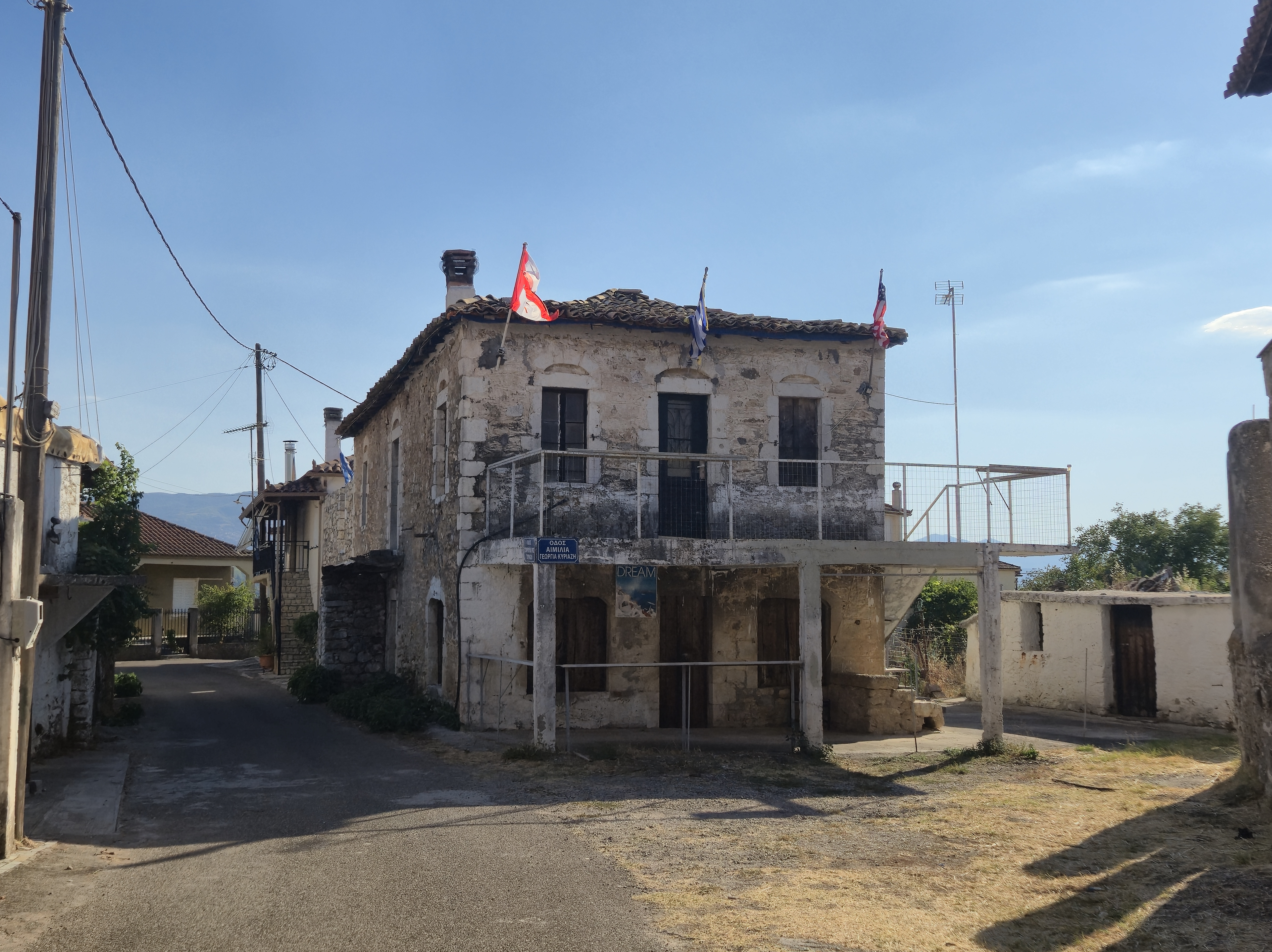 Remote village
Remote village
I do recall a bit of a setback – after many miles of climbing, I saw the countryside open up and a long descent ahead. Thrilled, I started the descent and reached a junction. Google said, "in 200 meters, turn left." No freaking way! That meant an uphill battle, getting back to the altitude I had just descended from. Darn! Extremely demotivating, seeing the switchbacks ahead. Frustrated, I got off my bike – thinking of giving up this ride and just flying home, leaving my bike behind. I considered hitch-hiking, but the area was so remote I would still be standing there. I ate some of my supplies, which gave extra energy and helped bury my frustration. Luckily, the area levelled out after a while.
At one place, I heard loud bangs every five minutes – I was yet again in bear country.
Later, I saw a hotel about 16 kilometers away. Originally, I had planned to visit a lesser-known archaeological site, but it would have been a 2-km detour – and now daylight was slowly fading, so I decided against it. Google Maps promised a strong uphill push – and it delivered. I started the climb; I am not too proud to admit it took roughly three hours for 16 km. I rode through a small village, the old inhabitants watching me struggle uphill with mild disbelief. At a small, poorly equipped store, I bought snacks in case I needed to wild camp.
At a village further uphill, four dogs came hurtling at me, one dragging a long chain with a rod at the end – it had apparently broken free. By now, I had figured out a strategy for street dogs – I would just ignore them. When they saw me approaching slowly but steadily, they had second thoughts and escaped to the side of the road, whining. Ha, cowards!
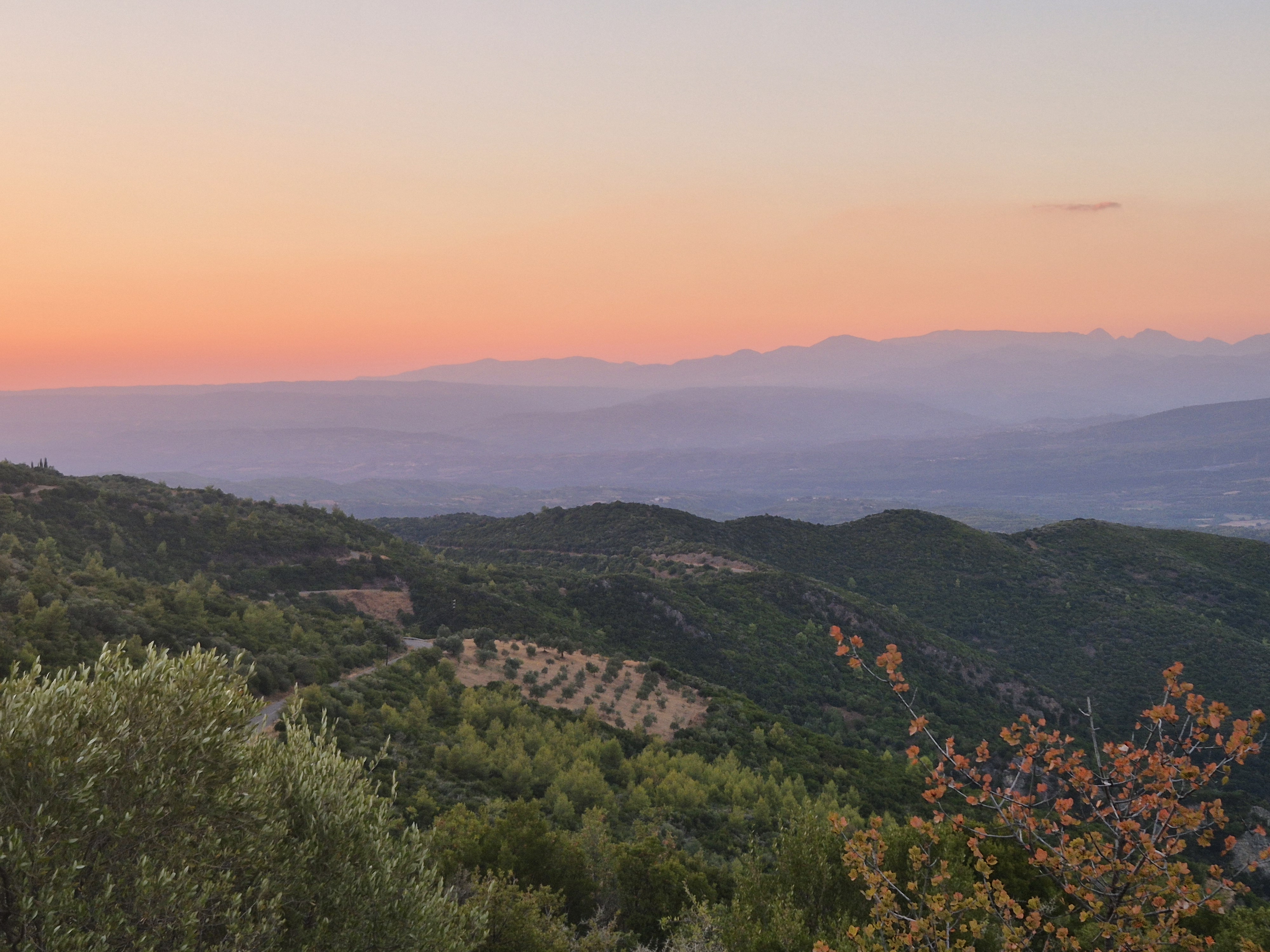 Looking back at the valley I had ridden from; you can see the road creeping up the hill - and daylight slowly disappearing
Looking back at the valley I had ridden from; you can see the road creeping up the hill - and daylight slowly disappearing
I almost decided to wild camp. There were still 4 kilometers (almost an hour) to go. I found an olive plantation with a slightly open gate. I debated staying there – I doubt anyone would have seen me, with absolutely no traffic and the sun about to set. Half an hour later, I kicked myself for not having done it – it was getting dark and the end still far away.
It was only after 8 pm that I reached the vicinity of the beautifully lit village, Andritsaina. To be honest, I did not expect such a “nice” place in this remote section of Greece – but there it was. According to legend, Andritsaina owes its name to the wife of a Cretan shepherd named Andrikos, who – chasing runaway sheep – came to a spring on Mount Lykaion. There he built an inn that, after his death, was kept by his wife Andritsaina (meaning "the wife of Andrikos"). From her name and the local pronunciation of "kai" as "tsai," the inn was named "the hostel of Andritsaina." Today, the village has impressive old mansions, cobblestone streets, a square surrounded by tall trees, and magnificent views. The fountain in the main square is the Peloponnese's oldest, built in 1724.
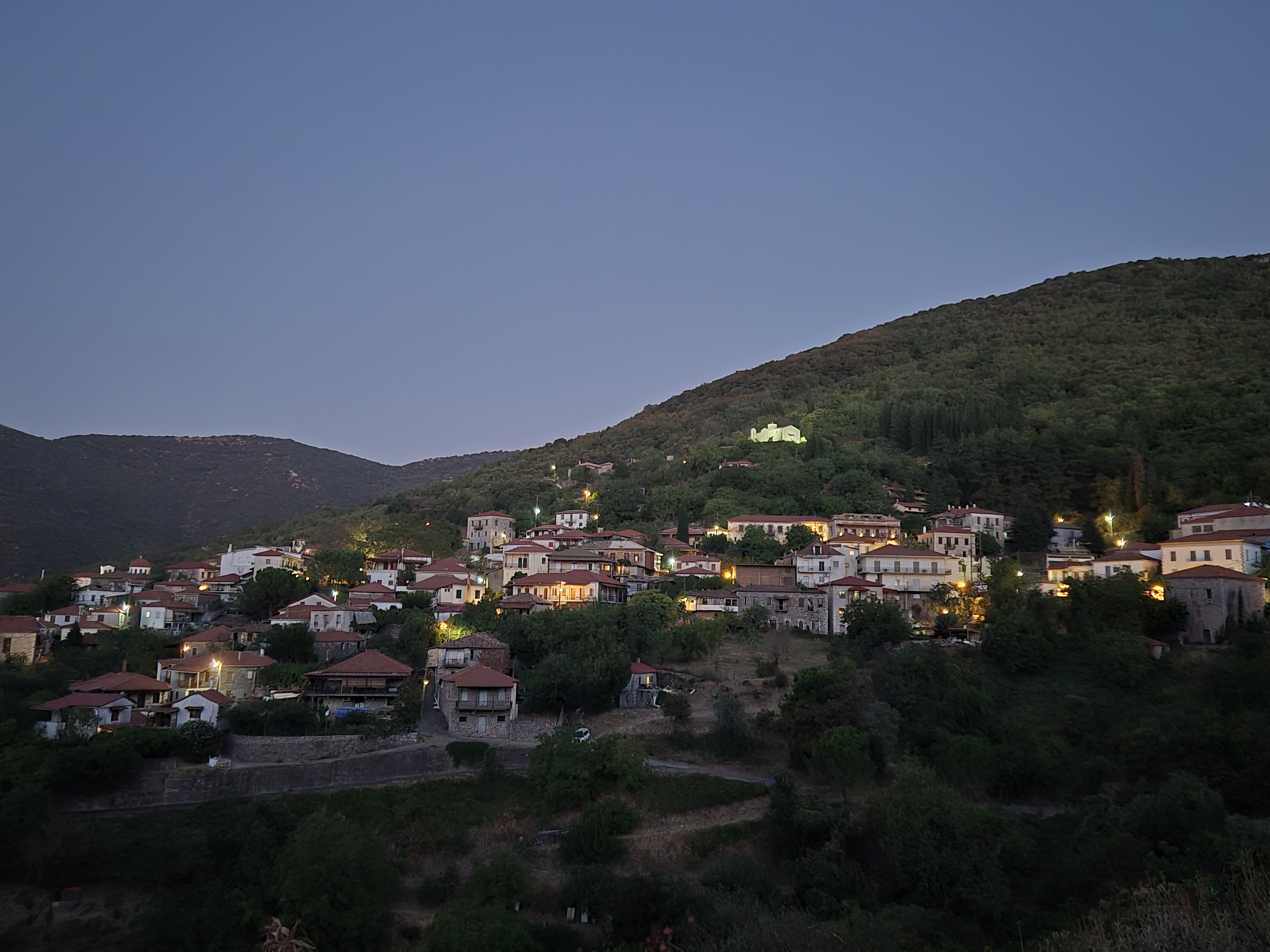 It was quite a surprise seeing such a beautiful village in this remote area
It was quite a surprise seeing such a beautiful village in this remote area
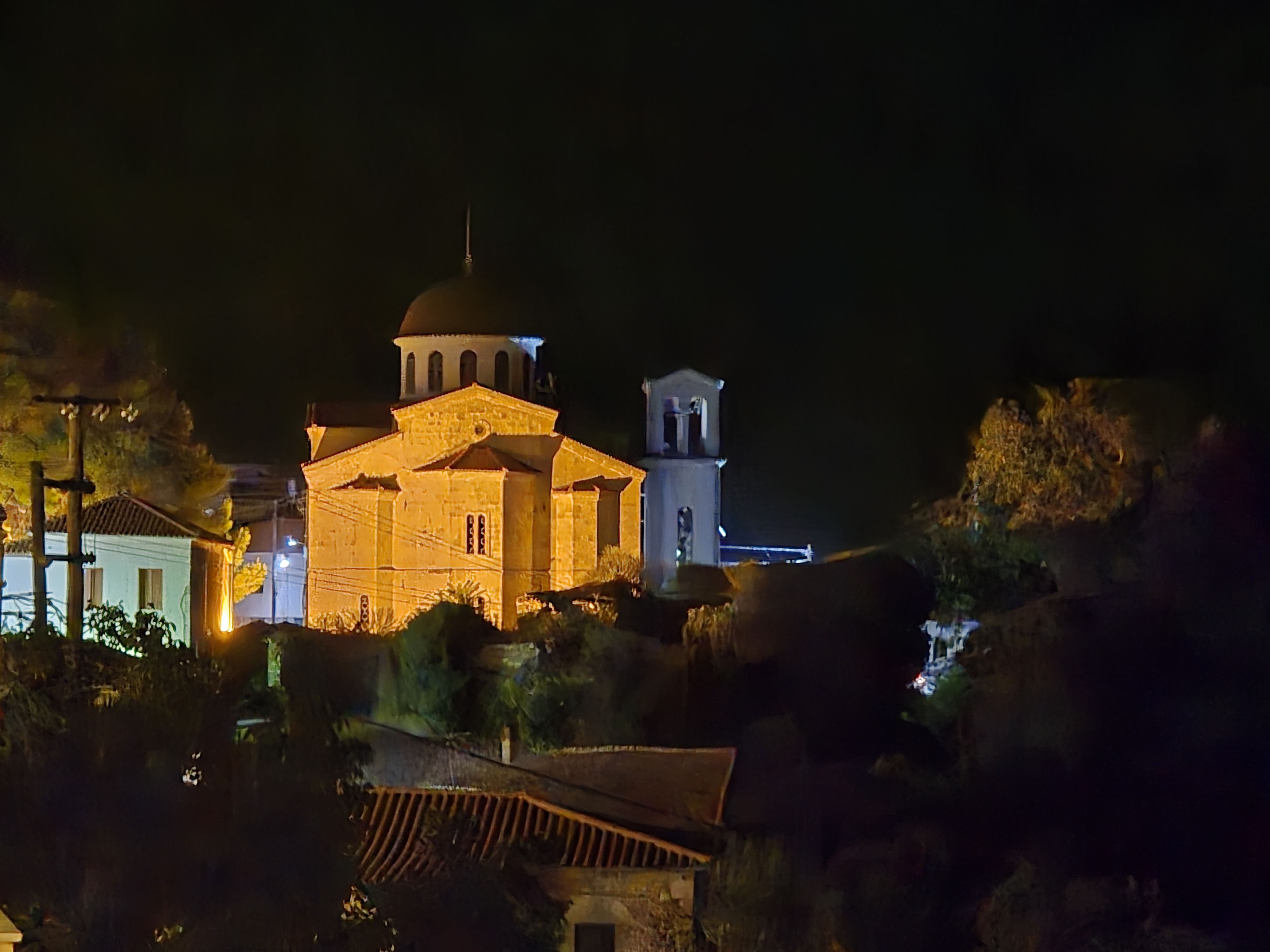 The largest church
The largest church
I rolled into town (well, uphill, not really rolling) and found a place to stay, bargaining the room from €70 to €40. I had a beer near the old fountain and went for a walk, with numerous restaurants and cafés relatively full. There was even a bakery open, where I had an orange cake – it was just OK.
At my accommodation, I showered and slept rather well.
It seems I made some 92 kilometers, with 1,561 meters of elevation.